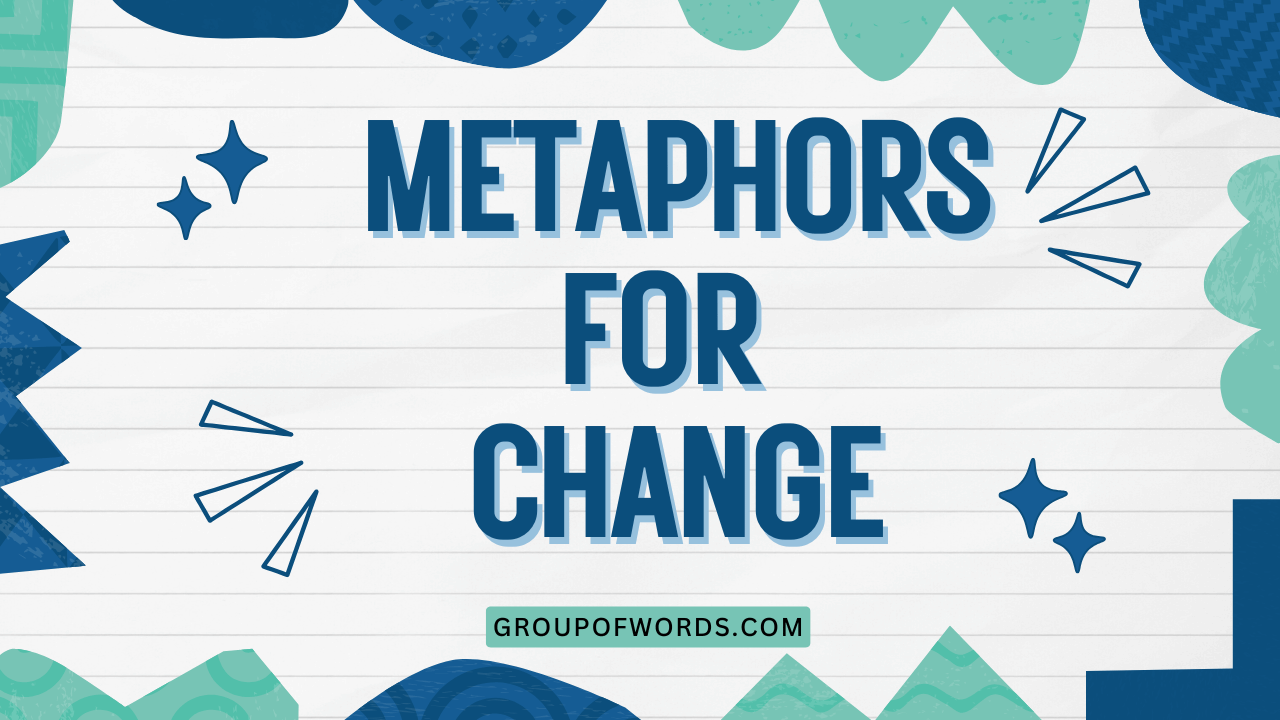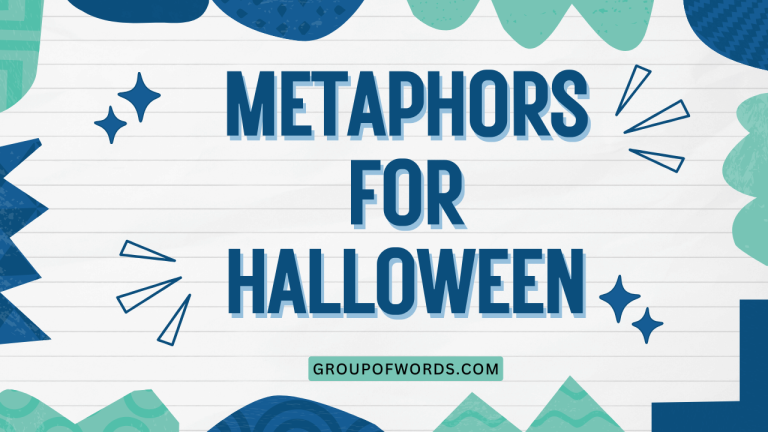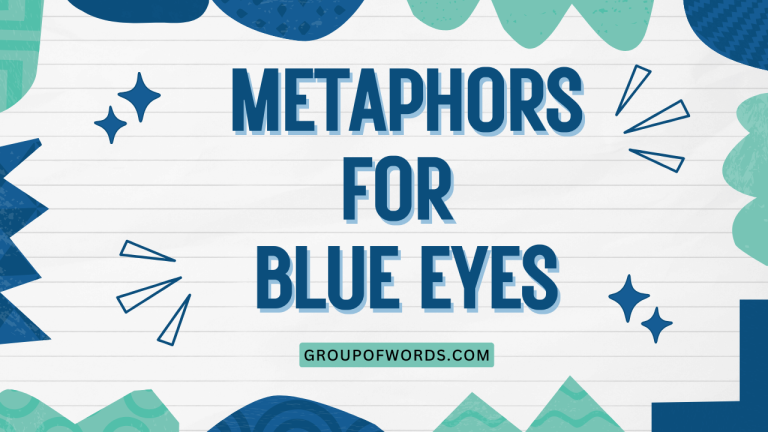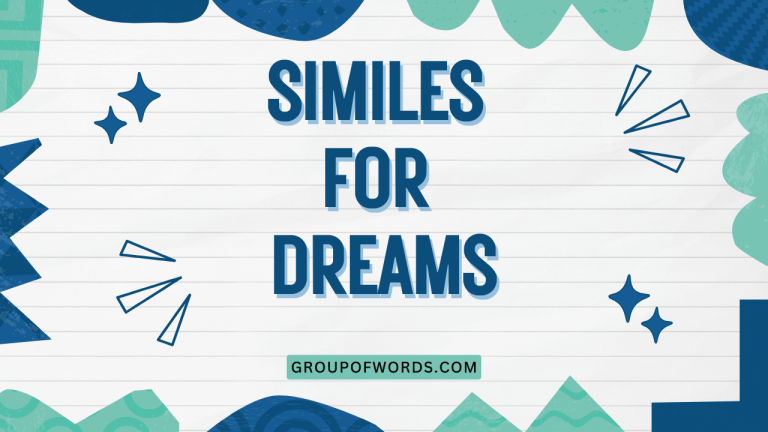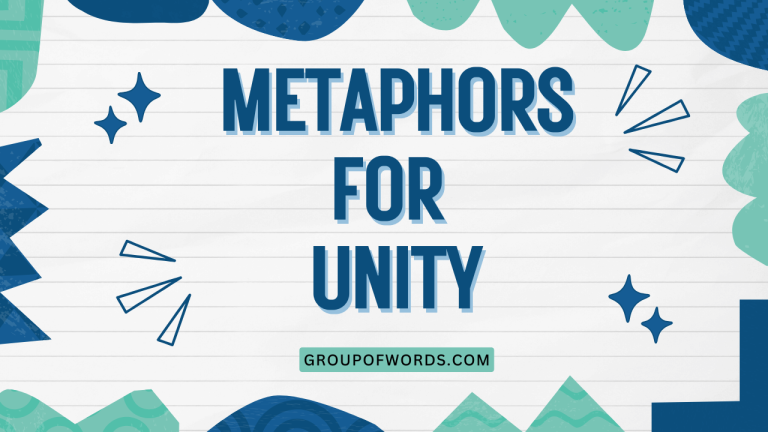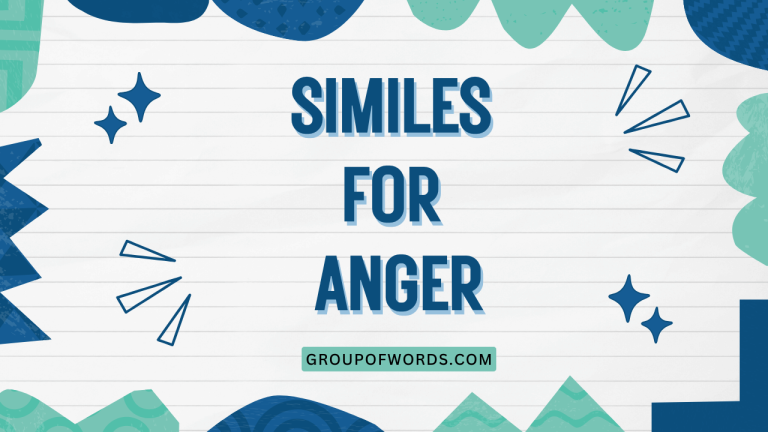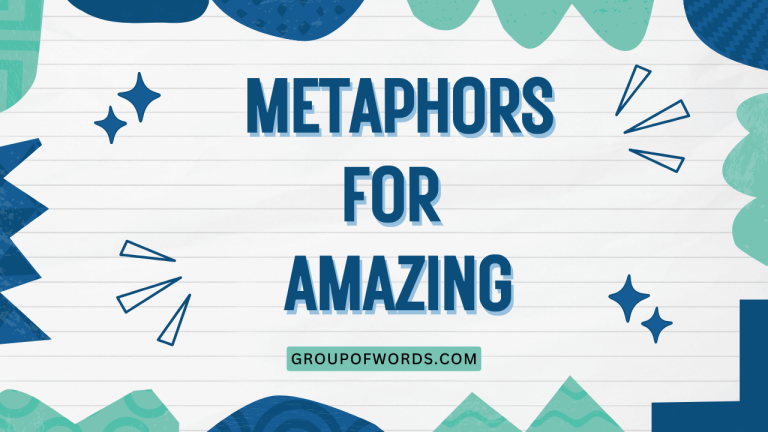Metaphors for Change: A Comprehensive Guide
Change is a constant in life, and understanding how we talk about it is crucial for effective communication. Metaphors provide a powerful tool for conveying the often complex and abstract nature of change in relatable and vivid terms.
This article delves into the world of metaphors for change, exploring their various types, structural elements, and usage rules. Whether you’re an English language learner, a writer seeking to enrich your prose, or simply someone interested in the nuances of language, this guide will equip you with the knowledge and skills to understand and utilize metaphors for change effectively.
Table of Contents
- Introduction
- Definition of Metaphors for Change
- Structural Breakdown
- Types of Metaphors for Change
- Examples of Metaphors for Change
- Usage Rules
- Common Mistakes
- Practice Exercises
- Advanced Topics
- FAQ
- Conclusion
Definition of Metaphors for Change
A metaphor for change is a figure of speech that uses an image, idea, or object to represent the process of transformation, adaptation, or evolution. Unlike similes, which explicitly compare two things using “like” or “as,” metaphors imply a resemblance or analogy between the concept of change and something else entirely.
This allows for a more evocative and impactful understanding of change, making it more relatable and easier to grasp.
Metaphors for change function by transferring qualities or characteristics from the source domain (the image, idea, or object) to the target domain (the concept of change). For example, if we say “change is a journey,” we are transferring the qualities of travel, progress, and potential obstacles from the domain of “journey” to the domain of “change.” This helps us conceptualize change as a process with a beginning, middle, and end, filled with opportunities and challenges along the way.
The context in which a metaphor is used is crucial for understanding its intended meaning and impact.
Structural Breakdown
The structure of a metaphor for change typically involves two key elements: the tenor and the vehicle. The tenor is the subject being described – in this case, change. The vehicle is the image, idea, or object used to represent change. Understanding how these elements interact is essential for interpreting and using metaphors effectively.
Consider the metaphor “change is a rollercoaster.” Here, “change” is the tenor, and “rollercoaster” is the vehicle. The qualities of a rollercoaster – its ups and downs, unexpected twists and turns, and thrilling yet sometimes frightening nature – are transferred to the concept of change.
The effectiveness of a metaphor depends on the clarity and relevance of the connection between the tenor and the vehicle. A well-chosen vehicle can illuminate specific aspects of change, making it more understandable and memorable.
Types of Metaphors for Change
Metaphors for change can be categorized based on the type of imagery or concept they employ. Here are some common types:
Journey Metaphors
Journey metaphors portray change as a process of moving from one place or state to another. They emphasize the idea of progress, direction, and potential obstacles along the way.
These metaphors often involve words like “path,” “road,” “destination,” and “obstacle.”
Growth Metaphors
Growth metaphors liken change to the process of growing, developing, or maturing. They highlight the idea of gradual progress, nurturing, and reaching full potential.
These metaphors often involve words like “seed,” “bloom,” “cultivate,” and “harvest.”
Weather Metaphors
Weather metaphors use weather conditions to represent the different phases or aspects of change. They can convey the idea of storms, sunshine, and shifting climates, reflecting the unpredictable and sometimes turbulent nature of change.
These metaphors often involve words like “storm,” “sunshine,” “wind,” and “clouds.”
Construction Metaphors
Construction metaphors depict change as a process of building, creating, or dismantling structures. They emphasize the idea of planning, effort, and the potential for both creation and destruction.
These metaphors often involve words like “build,” “foundation,” “blueprint,” and “demolish.”
Transformation Metaphors
Transformation metaphors portray change as a fundamental shift in form, nature, or appearance. They highlight the idea of metamorphosis, evolution, and becoming something entirely new.
These metaphors often involve words like “butterfly,” “alchemy,” “evolution,” and “rebirth.”
Examples of Metaphors for Change
Here are some examples of metaphors for change, categorized by type. Each table contains a variety of examples showcasing the diverse ways in which these metaphors can be used.
Journey Metaphors Examples
These examples illustrate how change can be conceptualized as a journey with various stages and challenges.
| Metaphor | Explanation |
|---|---|
| The road to success is paved with hard work. | Success is portrayed as a destination reached through effort. |
| We’re navigating uncharted waters. | The situation is new and uncertain, like exploring unknown seas. |
| It’s a long and winding road. | The process will be lengthy and complex. |
| We’ve reached a crossroads. | A significant decision point has been reached. |
| The path forward is unclear. | The direction to take is uncertain. |
| They’re on the right track. | They are making progress in the correct direction. |
| She’s come a long way. | She has made significant progress or improvement. |
| He’s hit a roadblock. | He has encountered a significant obstacle. |
| We’re moving in circles. | We are not making any real progress. |
| This is a step in the right direction. | This action is a positive move towards a goal. |
| The journey has just begun. | The process is in its early stages. |
| We’re at the starting line. | We are about to begin a new endeavor. |
| They’re following the wrong map. | They are using an incorrect strategy or approach. |
| She’s lost her way. | She has become confused or disoriented. |
| He’s reached the summit. | He has achieved his goal. |
| We’re climbing uphill. | We are facing challenges and difficulties. |
| The finish line is in sight. | The goal is close to being achieved. |
| It’s a slippery slope. | A situation that could become progressively worse. |
| They’re blazing a trail. | They are pioneering a new approach. |
| We’re charting a new course. | We are developing a new strategy or direction. |
| This is a detour. | This is a temporary departure from the main route. |
| They’re going off-road. | They are trying an unconventional or risky approach. |
| She’s reached a dead end. | She has encountered an insurmountable obstacle. |
| He’s on a one-way street. | He is committed to a course of action with no turning back. |
Growth Metaphors Examples
These examples illustrate how change can be seen as a natural process of growth and development.
| Metaphor | Explanation |
|---|---|
| From small acorns, mighty oaks grow. | Significant achievements can arise from humble beginnings. |
| They’re planting the seeds of change. | They are initiating actions that will lead to transformation. |
| We need to cultivate new ideas. | We must nurture and develop innovative concepts. |
| The company is blossoming. | The company is thriving and flourishing. |
| He’s a late bloomer. | He is developing or succeeding later in life than others. |
| The project is bearing fruit. | The project is producing positive results. |
| She’s nurturing her talent. | She is developing and improving her skills. |
| The idea is still in its infancy. | The idea is in its early stages of development. |
| We need to prune the dead branches. | We must eliminate unproductive elements. |
| They’re reaping what they sow. | They are experiencing the consequences of their actions. |
| The movement is gaining momentum. | The movement is growing stronger and more influential. |
| It’s a budding romance. | A new romantic relationship is developing. |
| The organization is sprouting new branches. | The organization is expanding into new areas. |
| We need to let the idea take root. | We must allow the idea to become established and ingrained. |
| The concept is still germinating. | The concept is in the early stages of development. |
| He’s a growing concern. | He is becoming an increasing source of worry. |
| The technology is evolving rapidly. | The technology is developing and changing quickly. |
| We’re harvesting new opportunities. | We are taking advantage of emerging possibilities. |
| The company is branching out. | The company is expanding its operations. |
| She’s blossoming into a confident leader. | She is developing into a strong and capable leader. |
| The idea is withering on the vine. | The idea is failing to develop and thrive. |
| We need to fertilize the soil. | We must provide the necessary conditions for growth. |
| The project is bearing little fruit. | The project is producing minimal results. |
| He’s a seed of hope. | He is a source of optimism and potential. |
Weather Metaphors Examples
These examples show how weather conditions can be used to describe the atmosphere and impact of change.
| Metaphor | Explanation |
|---|---|
| A storm of change is brewing. | A period of significant upheaval is approaching. |
| After the storm, comes the calm. | Following a period of turmoil, there will be peace and stability. |
| The winds of change are blowing. | New trends and influences are emerging. |
| We’re weathering the storm. | We are enduring a difficult period. |
| It’s a sunny outlook. | The future appears bright and promising. |
| There are dark clouds on the horizon. | There are potential problems or threats looming. |
| The climate is shifting. | The overall environment is changing. |
| We’re in a drought of innovation. | There is a lack of new ideas and creativity. |
| The atmosphere is electric. | The environment is charged with excitement and anticipation. |
| It’s a perfect storm. | A combination of factors creating a disastrous situation. |
| The fog is lifting. | Things are becoming clearer and more understandable. |
| We’re navigating through choppy waters. | We are dealing with difficult and unstable conditions. |
| The tide is turning. | The prevailing trend is reversing. |
| We’re caught in a whirlwind. | We are overwhelmed by a rapid series of events. |
| The skies are clearing. | The situation is improving. |
| It’s raining opportunities. | Many favorable chances are arising. |
| We’re feeling the heat. | We are under pressure. |
| The ice is thawing. | Relationships are becoming warmer and more friendly. |
| We’re in the eye of the storm. | We are in a temporary period of calm amidst turmoil. |
| The floodgates have opened. | A sudden and overwhelming release has occurred. |
| It’s a breeze. | It’s easy. |
| They are chasing rainbows. | They are unrealistically pursuing a goal. |
| The temperature is rising. | The intensity of the situation is increasing. |
| They are snowed under. | They are overwhelmed with tasks. |
Construction Metaphors Examples
These examples use the imagery of building and construction to represent change.
| Metaphor | Explanation |
|---|---|
| We’re building a new foundation. | We are establishing a solid base for future growth. |
| The old system is crumbling. | The existing structure is failing. |
| They’re laying the groundwork for success. | They are preparing the necessary conditions for achievement. |
| We need to demolish the old structure. | We must dismantle the outdated system. |
| The plan is still on the drawing board. | The plan is in the early stages of development. |
| They’re constructing a better future. | They are creating a more positive outlook. |
| We need to reinforce the walls. | We must strengthen the existing defenses. |
| The project is brick by brick. | The project is progressing slowly and steadily. |
| She’s building bridges. | She is fostering connections and relationships. |
| The framework is solid. | The underlying structure is strong and reliable. |
| The old structure is collapsing. | The existing system is failing. |
| We need to rebuild trust. | We need to restore confidence. |
| They are erecting barriers. | They are creating obstacles. |
| The foundation is weak. | The underlying structure is unstable. |
| We must fortify our position. | We need to strengthen our defenses. |
| They are building castles in the air. | They are making unrealistic plans. |
| We need to lay the cornerstone. | We need to establish the fundamental principle. |
| The architect of change. | The person who designs and implements change. |
| Constructive criticism. | Helpful feedback. |
| We are renovating the system. | We are updating the system. |
| They are patching up the holes. | They are fixing the problems. |
| We are dismantling the old ways. | We are getting rid of the old systems. |
| They are erecting scaffolding. | They are providing temporary support. |
| We are cementing our partnership. | We are strengthening our relationship. |
Transformation Metaphors Examples
These examples highlight the idea of fundamental change and metamorphosis.
| Metaphor | Explanation |
|---|---|
| The caterpillar became a butterfly. | A complete and beautiful transformation occurred. |
| They’re undergoing a metamorphosis. | They are experiencing a significant change in form or nature. |
| The company is reinventing itself. | The company is fundamentally changing its identity and direction. |
| He’s a phoenix rising from the ashes. | He is recovering and thriving after a period of destruction. |
| The city is experiencing a renaissance. | The city is undergoing a period of renewed growth and creativity. |
| They are turning lead into gold. | They are creating something valuable from something worthless. |
| We are evolving into a new form. | We are developing into something different than before. |
| The old ways are dying. | The previous methods are becoming obsolete. |
| The seed is transforming. | The original idea is changed. |
| She is molting her old skin. | She is shedding her old habits. |
| He is a chrysalis. | He needs time to change. |
| We are making a sea change. | We are making a huge change. |
| He is a new man. | He is changed. |
| She is a blank canvas. | She is ready to change. |
| We are rebirthing. | We are renewing. |
| They are shedding their skin. | They are changing. |
| It is a seismic shift. | It is a monumental change. |
| We are transmuting. | We are altering. |
| He is a shapeshifter. | He is a chameleon. |
| The old is becoming new. | The past is reborn. |
| She is being re-forged. | She is being rebuilt. |
| He is being re-engineered. | He is being redesigned. |
| We are being reconstructed. | We are being rebuilt. |
| They are being resculpted. | They are being reformed. |
Usage Rules
Using metaphors effectively requires careful consideration of several factors. First, ensure that the vehicle is relevant to the tenor and that the connection between them is clear.
A poorly chosen vehicle can confuse or mislead the audience. Second, avoid mixed metaphors, which combine incompatible images or ideas.
For example, “We’re navigating uncharted waters while planting the seeds of change” is a mixed metaphor because it combines the journey metaphor of “uncharted waters” with the growth metaphor of “planting seeds.” This creates a confusing and disjointed image.
Third, be mindful of the context in which you are using the metaphor. The same metaphor can have different meanings or connotations depending on the audience and the situation.
Finally, use metaphors sparingly and strategically. Overusing metaphors can make your writing or speech sound clichéd or contrived.
A well-placed metaphor, however, can add depth, color, and impact to your communication.
Common Mistakes
One common mistake is using clichéd metaphors that have lost their impact through overuse. Instead of saying “think outside the box,” try a more original metaphor that captures the essence of innovation.
Another common mistake is using mixed metaphors, as mentioned earlier. Ensure that the images and ideas in your metaphor are consistent and coherent.
Finally, avoid using metaphors that are too obscure or complex for your audience to understand. The goal of a metaphor is to clarify and enhance understanding, not to confuse or alienate the listener or reader.
Here are some examples of common mistakes and how to correct them:
| Incorrect | Correct | Explanation |
|---|---|---|
| We’re sailing uncharted waters while climbing the corporate ladder. | We’re navigating uncharted waters. OR We’re climbing the corporate ladder. | Mixed metaphors create confusion. Choose one consistent image. |
| Change is a necessary evil. | Change is a challenge we must embrace. OR Change brings both opportunities and difficulties. | The term “necessary evil” is a cliché and does not convey a positive message. |
| The new strategy is like a fish out of water, soaring through the sky. | The new strategy is like a fish out of water. OR The new strategy is soaring through the sky. | Inconsistent metaphors create confusion. Select one image and be consistent. |
| The winds of change are blowing, and we must grab the bull by the horns. | The winds of change are blowing, and we must adapt. OR We must grab the bull by the horns and take control. | Inconsistent metaphors. Choose one image and be consistent. |
| The idea is a diamond in the rough, a beacon of hope in a sea of despair. | The idea is a diamond in the rough. OR The idea is a beacon of hope in a sea of despair. | Mixed metaphors. Choose one image and be consistent. |
Practice Exercises
Test your understanding of metaphors for change with these exercises.
Exercise 1: Identifying Metaphors
Identify the metaphor in each sentence and explain its meaning.
| Question | Answer |
|---|---|
| 1. The company is navigating through a sea of challenges. | The company is facing many difficulties, like a ship navigating a rough sea. |
| 2. The project is blossoming into a success. | The project is growing and developing into something successful, like a flower blooming. |
| 3. Change is a rollercoaster of emotions. | Change involves many ups and downs, like a rollercoaster ride. |
| 4. They are building a new future, brick by brick. | They are creating a new future gradually, like constructing a building one brick at a time. |
| 5. The old system is crumbling under the weight of change. | The old system is failing due to the pressure of change, like a building collapsing under its own weight. |
| 6. The winds of change are sweeping through the industry. | New trends and influences are spreading rapidly throughout the industry. |
| 7. We are at a crossroads. | We are at a point of decision. |
| 8. They are in the eye of the storm. | They are in a safe place. |
| 9. We are laying the groundwork. | We are preparing. |
| 10. It’s a slippery slope. | It’s dangerous. |
Exercise 2: Creating Metaphors
Create a metaphor for change based on the given scenario.
| Scenario | Possible Metaphor |
|---|---|
| A company is undergoing a major restructuring. | The company is remodeling its entire structure. |
| An individual is learning a new skill. | He is adding a new tool to his skillset. |
| A community is recovering from a natural disaster. | The community is rebuilding from the ground up. |
| A relationship is evolving and deepening. | The relationship are growing roots. |
| A person is overcoming a personal challenge. | The person is climbing a mountain. |
| The company is reinventing itself. | The company is transforming itself. |
| The old company is dying. | The old company is decaying. |
| The new company is growing. | The new company is sprouting. |
| The situation is becoming more clear. | The fog is lifting. |
| They are transforming a team. | They are reforging a team. |
Exercise 3: Correcting Mistakes
Identify and correct the mistake in each sentence.
| Question | Answer |
|---|---|
| 1. We’re planting the seeds of change while navigating uncharted waters. | We’re planting the seeds of change. OR We’re navigating uncharted waters. (Avoid mixed metaphors) |
| 2. Change is a necessary evil that we must embrace. | Change is a challenge that we must embrace. (Avoid clichés and negative connotations) |
| 3. The team is building bridges while also climbing the ladder of success. | The team is building bridges. OR The team is climbing the ladder of success. (Avoid mixed metaphors) |
| 4. The company is in a drought of innovation and also building a new foundation. | The company is in a drought of innovation. OR The company is building a new foundation. (Avoid mixed metaphors) |
| 5. The new strategy is like a storm in a teacup, planting seeds. | The new strategy is like a storm in a teacup. Or The new strategy is planting seeds. (Avoid mixed metaphors) |
Advanced Topics
For advanced learners, exploring the use of extended metaphors and the cultural context of metaphors can be particularly rewarding. An extended metaphor is a metaphor that is developed over several sentences or paragraphs, creating a more complex and nuanced image.
Understanding the cultural context of metaphors is important because the same metaphor can have different meanings in different cultures. For example, the metaphor of “climbing the ladder” may be more relevant in individualistic cultures that emphasize personal achievement than in collectivist cultures that prioritize group harmony.
Another advanced topic is the use of metaphors in persuasive communication and rhetoric. Metaphors can be powerful tools for shaping perceptions, framing issues, and influencing attitudes.
By carefully choosing metaphors that resonate with their audience, speakers and writers can effectively communicate their message and achieve their desired outcome. Understanding the rhetorical power of metaphors is essential for anyone who wants to become a more persuasive and effective communicator.
FAQ
Here are some frequently asked questions about metaphors for change:
- What is the difference between a metaphor and a simile?
A metaphor implies a resemblance between two things, while a simile explicitly compares them using “like” or “as.” For example, “change is a journey” is a metaphor, while “change is like a journey” is a simile.
- Why are metaphors for change useful?
Metaphors make abstract concepts more concrete and relatable. They can also add emotional impact and enhance understanding.
- How can I avoid using clichéd metaphors?
Be creative and look for original ways to express your ideas. Think about the specific qualities or characteristics of change that you want to emphasize and choose a vehicle that effectively conveys those qualities.
- What is a mixed metaphor, and why should I avoid it?
A mixed metaphor combines incompatible images or ideas, creating confusion and undermining the clarity of your message. Avoid mixed metaphors by ensuring that the elements of your metaphor are consistent and coherent.
- How can I choose the right metaphor for my audience?
Consider the background, knowledge, and cultural context of your audience. Choose a metaphor that is relevant, understandable, and resonates with their experiences.
- Can metaphors be used in all types of writing and speaking?
Metaphors can be used in a wide range of contexts, from creative writing to business communication. However, it’s important to use them appropriately and strategically, depending on the purpose and audience.
- How do I know if a metaphor is effective?
An effective metaphor should be clear, relevant, and impactful. It should enhance understanding and add depth to your communication. If your audience seems confused or does not grasp the intended meaning, the metaphor may not be effective.
- Are there any cultures where metaphors are not used as frequently?
While metaphors are a universal feature of human language, the frequency and type of metaphors used can vary across cultures. Some cultures may prefer more direct and literal communication styles, while others may embrace more figurative language.
Conclusion
Metaphors for change are powerful tools for understanding and communicating about transformation, adaptation, and evolution. By understanding the structure, types, and usage rules of these metaphors, you can effectively use them to enrich your writing, enhance your communication, and gain deeper insights into the nature of change itself.
Remember to choose your metaphors carefully, avoid common mistakes, and always consider your audience and context. With practice and attention to detail, you can master the art of using metaphors for change and unlock their full potential.
The key takeaway is that metaphors are not just decorative elements of language; they are fundamental tools for shaping our understanding of the world. By learning to recognize, interpret, and create metaphors for change, you can become a more effective communicator and a more insightful thinker.
Continue to explore the world of metaphors, and you will discover new and exciting ways to express your ideas and connect with others.
